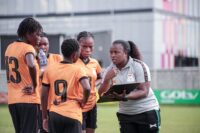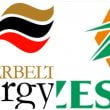CEC has no special attachment to the Bulk Supply Agreement (BSA) and is not fighting for its reinstatement, says Copperbelt Energy Corporation Plc (CEC) Senior Manager – Account Management, Mulenga Bwalya.
And Bwalya has asserted that it is not possible for someone to lose more money than they can possibly make from a contract.
This is contrary to claims made by Patrick Mwila, Zesco’s Director of Strategy and Corporate Services, Patrick Mwila that Zesco was losing over $200 million annually due to the “unfair and one-sided” nature of the BSA.
Bwalya described the BSA as having been an important agreement that guided the commercial relationship between CEC and Zesco during its validity but that with its expiry, CEC had moved on and was looking to enter into other appropriate and mutually acceptable agreements.
“What is never said by Zesco is that the BSA granted them exclusivity of power supply to CEC. This means that the BSA did not allow CEC to source or buy power from anywhere else other than Zesco. How was that not a benefit to them, especially given that the region has sold cheaper power than Zesco on several occasions?”
Quizzed about Zesco’s claim of having sustained major financial losses due to the BSA, Mulenga stated that CEC’s income is about $80 million per year from its power supply business to the mines in Zambia, after paying Zesco for power purchases under the BSA.
He revealed that over the period of the BSA, CEC paid about 75% – 80% of what it earned from the mines to Zesco annually. Even if CEC was to retain zero revenue from its power sales to the mines and pay everything to Zesco, their [Zesco’s] additional revenue would at the very most be $80 million.
And Bwalya wondered how such a claim was possible because a senior person like Mwila is expected to understand that if CEC only remained with $80 million annually after paying what was due to Zesco, even assuming that CEC paid all the money earned from the mines, it would not make up for the $200 million Mwila claims Zesco were losing.
“How, then, can Zesco lose $200 million?”, he wondered. “How was Zesco expecting to make more money than the total value of the supply chain to the mines? This perhaps explains why the negotiations between CEC and Zesco for a new agreement failed. It would appear that Mwila expects more money from the value chain than it is able to provide at the moment. Maybe he can show us how we can make that $200 million.”
He insisted that CEC is a listed entity whose financial statements are public documents accessible to anyone and encouraged members of the public and interested parties to read and scrutinize these reports for their own satisfaction.
On Mwila’s claim that CEC buys subsidized electricity because Zesco generates and buys the power from independent power producers at not less than 11c/kWh, Bwalya said that CEC was not a party to the power purchase agreements that Zesco has with its suppliers of electricity, hence, it is inconceivable that the company could be blamed for losses that it has no part in creating.
Further, he explained that whereas Zesco does buy some power from independent power producers, this forms only about 20% of the national installed capacity.
The bulk of the electricity, about 1800MW, comes from old or legacy power plants built many years ago, and that from his knowledge power from these plants is produced at about 3 cents to 4 cents per kilowatt hour.
“Based on this, my understanding is that the final generation tariff should be a weighted average of the two – that is the tariff from the old plants and the one from the new plants – but I guess they know better how to derive a tariff. This is a fundamental theory and that’s probably the reason why there is no consumer in Zambia today who is paying a tariff higher than the 13c/kWh that Mwila alluded to as the expected minimum tariff that CEC should be buying power at. If there is such a customer, we would also be interested to know about them. In any case, the Cost of Service Study currently in progress is expected to help the nation with this information.”
Bwalya said CEC found it even more perplexing that while Zesco has determined that it is supplying power to CEC and other customers at a subsidy, given the cost it takes to generate the electricity, and complaining of losing out on colossal amounts of money to a bad contract with CEC, they have in the same breath said they have given and are benefitting from a better deal with Konkola Copper Mines whom they have offered a tariff much less than 9 cents, certainly a number much lower than what they determine to be cost-reflective at not less than 13 cents.
“This raises the question of who is subsidizing who. You can’t be pushing to be getting more from one customer yet go ahead to give another customer discounted rates knowing fully well that you produce the power at a much higher cost,” he stated.
He continued, “I’d go further to suggest that Zesco publicly makes available the tariffs paid by all bulk consumers to allow the public to see and judge for themselves who pays a lower tariff and who does not. If you want to undertake a quick analysis, refer to the Zesco financials and see the contribution to its revenue by mining companies against the revenue contribution of all the other sectors.”
Asked about the claim that CEC is not transparent in its metering and denies Zesco access to its meters, Bwalya, who is also an expert in metering, explained that normal practice in the electricity supply industry is for representatives of all involved parties to witness meter readings being taken. In this case, meter readings to inform Zesco invoicing are taken at billing points stated in the agreement in the presence of the designated representatives of both CEC and Zesco.
“Remember that Zesco supplies power at the interface of the Zesco and CEC networks so the meters at that interface belong to Zesco, they are not CEC meters. CEC always witnesses the meter reading for the power being injected in its network. This is in accordance with the provisions of the BSA. The allegation, therefore, that CEC does not grant access to Zesco’s own meters does not make sense at all. They are not our meters but theirs and our role there is to witness as they read the meters.”
“However, from my reading of what Mwila said, it would appear that Zesco want to come and read the CEC meters to our customers. Again, that does not make sense and it goes against industry practice and standards. That would be similar to Zesco supplying a distributor like Northwestern Energy Corporation and instead of metering at the supply injection point to Northwestern Energy, which is the interface between the two networks, they insist on metering each house being supplied by the distributor. Alternatively, it would be like ESKOM supplying power to Zambia and insisting that they will not meter at the boarder where the two networks meet but would like to start metering each of Zesco’s customers. It’s important to consult the technical people with the right knowledge when people speak about certain things to avoid misleading the public.”
Regarding the claim by Mwila that the CEC Board Chairman wrote to Zesco explaining that the CEC team negotiating the agreement to succeed the BSA earlier this year had no mandate to negotiate with Zesco, Bwalya said he found it very unfortunate that Mwila found it appropriate to mislead the nation on the matter when he knew, as well as CEC and Zesco did, that no such letter exists.











